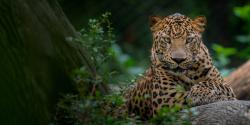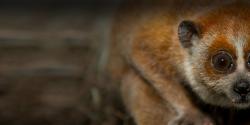Canada lynx primarily feed on snowshoe hares, which make up 60-90% of their diet. This predator-prey relationship is unique because no other cat species is as closely related to its prey as these two species. The population dynamics of the lynx and hares are interdependent. When there is an abundance of hares, lynx populations increase, but when the hare population decreases, lynx are forced to hunt for other prey, such as ground squirrels, grouse, and foxes. This shift away from hares takes a toll on lynx populations, causing them to ultimately shrink. The reason for the fluctuation in hare populations is not fully understood, but their density changes in cycles lasting about 8 to 11 years. During a cycle, hare density may increase up to 25-fold and then drop abruptly.
Trappers working for the Hudson's Bay Company first observed the rise and fall in numbers of snowshoe hares and Canada lynx more than two hundred years ago. The Hudson's Bay Company was heavily involved in the fur trade at the time.
Scientific Name: Lynx canadensis
Conservation Status: Least Concern
Size: Body length from nose to rump is typically 30-40 inches, with the tail adding 4-6.5 inches onto that. Height at the shoulder is generally 20-24 inches.
Weight: Weight can range from 22 to 42 pounds, with the males generally being larger than females.













